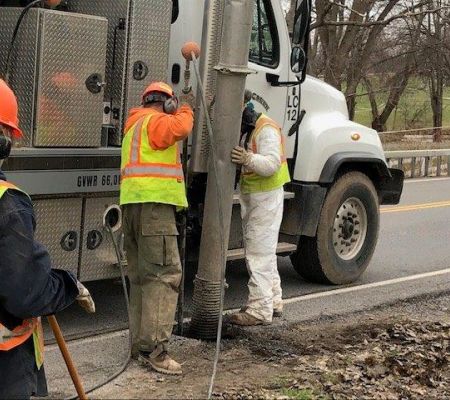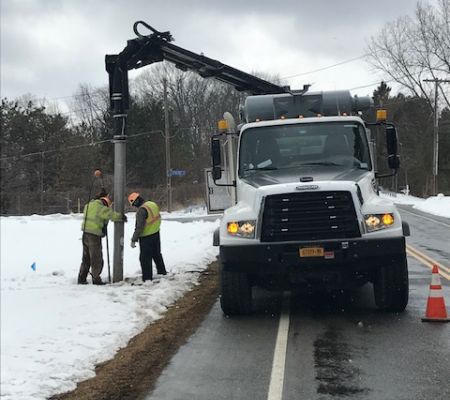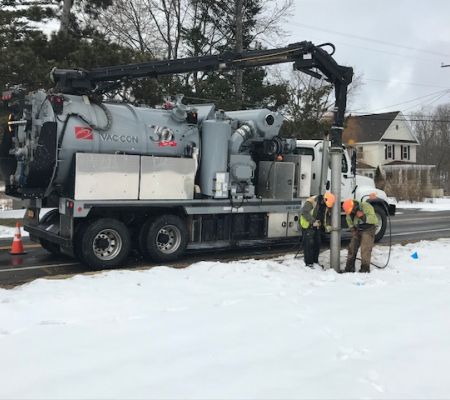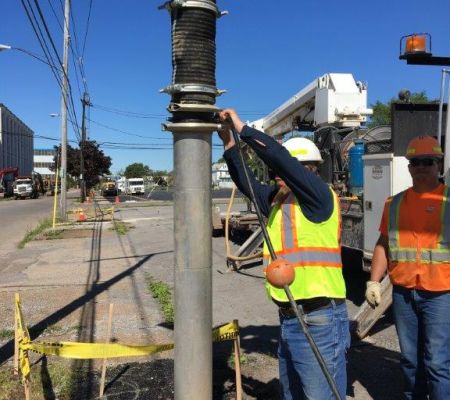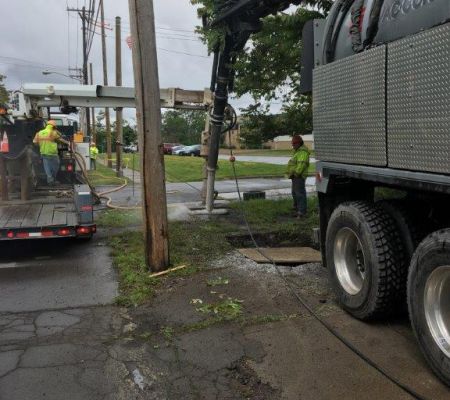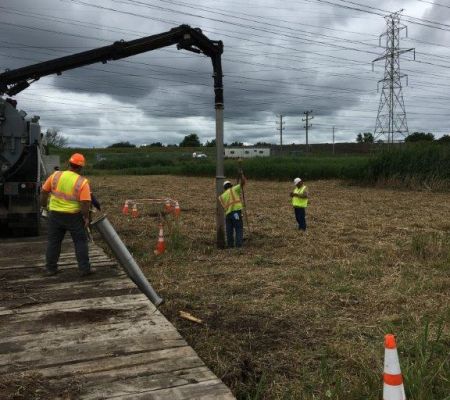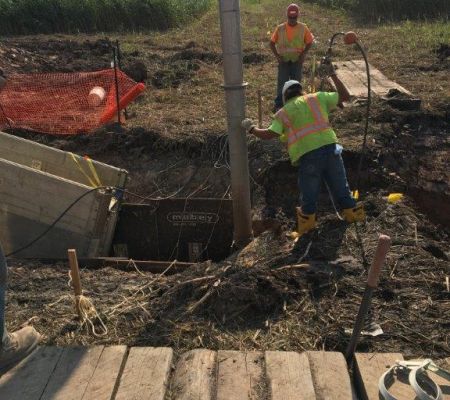Hydro Vacuum Excavation
Hydro Vacuum Excavation
Hydro vacuum excavation makes use of high-pressure water to soften the soil that is being removed. The soil is then transferred to the debris tank through a large vacuum hose. This lessens the risk of potentially damaging buried utilities that can occur when mechanical excavation methods are used.
The process of hydro excavation in exposing utilities can also be referred to as potholing or spotting. To expose the utilities, a combination of pressurized water and a very powerful vacuum are combined in one mobile unit. The water is injected into the ground by using a handheld wand to wash away the soil in the area safely. A debris suction hose transfers the soil to the debris tank. Because it is non-destructive, hydro excavation reduces the risk of damaging the underground pipes and cables. Using this method, the type, depth, and location of the utility is established accurately. This method allows for safe, clean and economical evacuations of the work area. It requires less restoration, less backfill, less labor and less negative environmental impact than typical excavating practices. Ledge Creek has multiple Vacuum excavation units, including subzero units, to deploy for any size project.

